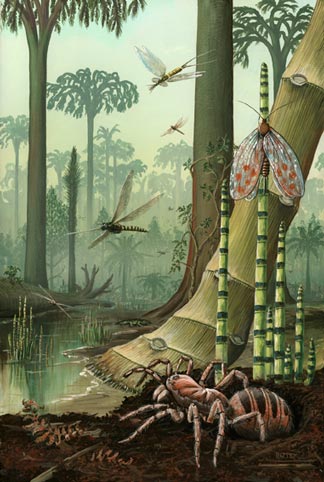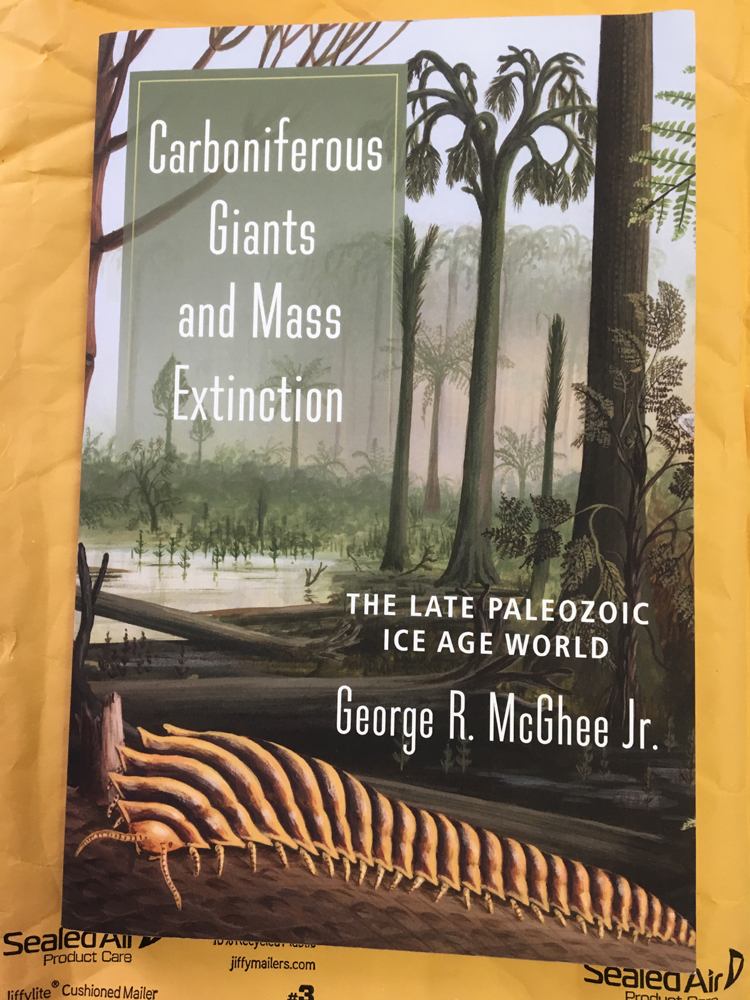“Carboniferous Giants and Mass Extinction”
Our thanks to the generous staff of Columbia University Press who kindly sent into our office an inspection copy of a new book entitled “Carboniferous Giants and Mass Extinction” written by George R. McGhee Jr.
This well-written text documents the amazing biology, botany and geography of our planet in the Late Palaeozoic, a world of giant ice sheets, huge continents and bizarre ancient forests that harboured an array of super-sized invertebrates as well as amphibian predators the size of modern alligators.
The Late Carboniferous – Exploring the Late Palaeozoic
Picture credit: Columbia University Press
Tropical Forests, a “Hot House” Equator and a Late Palaeozoic Ice Age
Life during the Palaeozoic consisted of a series of extremes. Many readers will be familiar with the huge insects that inhabited the Carboniferous forests, arguably the first complex terrestrial ecosystems to develop on our planet. The bizarre, tree-sized club mosses and horsetails, formed a backdrop to a dense undergrowth that was home to three-metre-long arthropods and dog-sized scorpions as well as giant spiders that fed on small vertebrates.
“Carboniferous Giants and Mass Extinction”
In the air, the first winged insects had evolved and they were giants, such as Meganeura, with a wingspan of around seventy centimetres. The land and seas surrounding the equator were so hot (temperatures exceeding forty degrees Celsius), that vast tracts of our Earth was virtually devoid of life. Sitting over the South Pole was a huge landmass, on which the largest tropical forests to have ever existed, as well as some the biggest ice sheets to have ever formed, could be found.
Insects of the Carboniferous

Picture Credit: Richard Bizley
The author, George R. McGhee Junior, is a distinguished professor of palaeobiology at Rutgers University (New Jersey, USA) and has held prominent research positions at a number of world-renowned institutions including the American Museum of Natural History in New York. McGhee explores our strange planet in the Late Carboniferous and investigates the consequences of an intense and prolonged period of glaciation. He examines ancient climate change and examines the fascinating flora and fauna that dominated our planet, before reflecting on the circumstances that was to lead to the greatest period of mass extinction recorded in the Phanerozoic (the Eon of “visible life”).
Highly recommended.
Find “Carboniferous Giants and Mass Extinction” by George R. McGhee Jr at the Columbia University Press site: Columbia University Press.







Leave A Comment